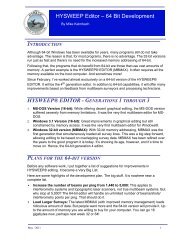

There are advanced control chart analysis techniques that forego the detection of shifts and trends, but before applying these advanced methods, the data should be plotted and analyzed in time sequence. If data is not correctly tracked, trends or shifts in the process may not be detected and may be incorrectly attributed to random ( common cause) variation. The individuals chart must have the data time-ordered that is, the data must be entered in the sequence in which it was generated. The I chart is used to detect trends and shifts in the data, and thus in the process. With x-axes that are time based, the chart shows a history of the process. Together they monitor the process average as well as process variation. The I-MR control chart is actually two charts used in tandem (Figure 7). The individuals and moving range (I-MR) chart is one of the most commonly used control charts for continuous data it is applicable when one data point is collected at each point in time. A process operating with controlled variation has an outcome that is predictable within the bounds of the control limits.įigure 6: Relationship of Control Chart to Normal Curve Control Charts for Continuous Data Controlled VariationĬontrolled variation is characterized by a stable and consistent pattern of variation over time, and is associated with common causes.

As such, data should be normally distributed (or transformed) when using control charts, or the chart may signal an unexpectedly high rate of false alarms.
#Youtube add enc chart hypack turn off visual quality plus#
(Note: The hat over the sigma symbol indicates that this is an estimate of standard deviation, not the true population standard deviation.)īecause control limits are calculated from process data, they are independent of customer expectations or specification limits.Ĭontrol rules take advantage of the normal curve in which 68.26 percent of all data is within plus or minus one standard deviation from the average, 95.44 percent of all data is within plus or minus two standard deviations from the average, and 99.73 percent of data will be within plus or minus three standard deviations from the average. Mathematically, the calculation of control limits looks like: Handpicked Content: Short-Run Statistical Process Control Techniques

Here, the process is not in statistical control and produces unpredictable levels of nonconformance. The fourth process state is the state of chaos. The lack of defects leads to a false sense of security, however, as such a process can produce nonconformances at any moment. In other words, the process is unpredictable, but the outputs of the process still meet customer requirements. The brink of chaos state reflects a process that is not in statistical control, but also is not producing defects. Although predictable, this process does not consistently meet customer needs. This type of process will produce a constant level of nonconformances and exhibits low capability. This process is predictable and its output meets customer expectations.Ī process that is in the threshold state is characterized by being in statistical control but still producing the occasional nonconformance. This process has proven stability and target performance over time. When a process operates in the ideal state, that process is in statistical control and produces 100 percent conformance. Processes fall into one of four states: 1) the ideal, 2) the threshold, 3) the brink of chaos and 4) the state of chaos (Figure 1). If the process is unstable, the process displays special cause variation, non- random variation from external factors.Ĭontrol charts are simple, robust tools for understanding process variability. A process is in control when based on past experience it can be predicted how the process will vary (within limits) in the future. When a process is stable and in control, it displays common cause variation, variation that is inherent to the process.

The descriptions below provide an overview of the different types of control charts to help practitioners identify the best chart for any monitoring situation, followed by a description of the method for using control charts for analysis. The most common application is as a tool to monitor process stability and control.Ī less common, although some might argue more powerful, use of control charts is as an analysis tool. Control charts have two general uses in an improvement project.


 0 kommentar(er)
0 kommentar(er)
